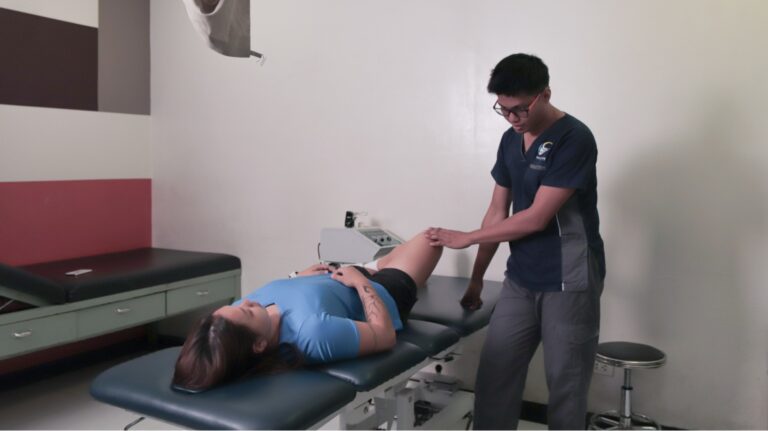Progress Feels Slow – Am I Failing at Physical Therapy?
If you’ve ever walked out of a therapy session thinking, “Why isn’t this working faster?”—you’re not alone. One of the toughest parts of recovery is not seeing progress as quickly as you’d like. You start to wonder if you’re doing something wrong, or if your body just isn’t cooperating.
Here’s a gentle reminder: Slow progress does not mean failure. In fact, it’s a normal, expected part of healing.
What is Physical Therapy?

Before we go deeper, let’s clear something up. What is physical therapy, really? It’s more than just stretching or getting a massage. Physical therapy is a science-backed approach to restoring function, reducing pain, and helping people move better after injuries, surgeries, or long-term conditions. It includes guided exercises, manual techniques, patient education, and gradual reconditioning—all tailored to your body’s needs.
Across the Philippines, physical therapy plays a growing role in healthcare, supporting recovery and quality of life for people of all ages. And in urban areas like Makati, you’ll find modern clinics blending clinical expertise with patient-centered care.
Recovery isn’t Linear—And That’s Okay
We often expect healing to be straightforward. You attend your sessions, follow your home program, and steadily improve. But anyone who’s been through physical therapy knows that recovery rarely goes in a straight line.
Some weeks you feel stronger, more mobile, even hopeful. Then suddenly, a flare-up or fatigue sets you back. It can be discouraging—but it’s also completely normal. Healing takes time. Muscles, joints, and tissues don’t rebuild overnight. Your nervous system also needs to relearn movements, reduce compensations, and regain confidence.
Even when you feel stuck, progress is happening beneath the surface.
Why Comparing Yourself to Others Doesn’t Help
If you’re doing therapy in a busy clinic or chatting with others going through recovery, it’s easy to compare your journey to theirs. “They’re already jogging again—why can’t I even walk without pain?” But here’s the truth: no two recoveries are the same.
Your progress depends on many things—your injury type, age, overall health, stress levels, even your sleep and nutrition. What looks like slow progress in one case might actually be right on track for your body.
At a physical therapy clinic, your plan is created just for you. The therapists consider your full history and goals to design an approach that works at your pace. So don’t worry about where others are—you’re not behind. You’re simply healing in your own time.
“Am I Failing at This?”
This is a thought that creeps in for many people during physical therapy. If your body isn’t bouncing back the way you hoped, it’s easy to blame yourself. But let’s reframe the question: are you showing up? Are you doing your best to follow through with what’s been prescribed? Are you giving your body time, rest, and care?
If the answer is yes, then you’re not failing. You’re doing the work. And that counts more than you realize. Therapists understand the emotional side of recovery just as much as the physical. That’s why they focus not only on exercises, but also on encouragement, mindset, and education. You don’t have to do this alone—and you’re not expected to be perfect.
Look for the Small Wins
Progress in physical therapy doesn’t always look like running again or lifting something heavy. It can be small and quiet:
Sleeping better because your pain is less intense
Reaching overhead without wincing
Getting through a full day without relying on pain meds
Standing longer than last week
Simply moving with a bit more ease
These changes matter. They build up slowly, creating the foundation for bigger gains. Your therapist will be the first to notice these wins, and they’ll use them to fine-tune your treatment.
Feeling Stuck? Here’s What to Do
When frustration kicks in, try the following:
1. Talk to Your Therapist
Share how you’re feeling. A good therapist will listen, reassess, and adjust your plan if needed. They may also show you data or benchmarks that prove you’re improving—even if you don’t feel it yet.
2. Track Your Progress
Write down changes, no matter how small. Range of motion, daily pain levels, how easy it is to get dressed or drive—all of these help you see the broader picture.
3. Be Kind to Yourself
Recovery is not a race. Give your body compassion and grace. Rest is as essential to progress as movement.
You’re Not Behind—You’re Just Healing
In a fast-paced world, slow progress feels frustrating. But in physical therapy, slow often means sustainable. It means your body is adapting, learning, and strengthening in ways that will last.
So no, you’re not failing. You’re moving forward—even if it doesn’t look like it today.
Need Support on Your Journey? Halcyon Fitness is Here

If you’re looking for a place where your recovery is supported, your timeline is respected, and your progress is nurtured with care—Halcyon Fitness is ready to help.
Our physical therapy program offers personalized care tailored to your goals. Whether you’re dealing with post-surgery rehab, chronic pain, or injury prevention, our team of licensed professionals will work with you one step at a time.
Located in Makati, Halcyon is more than just a physical therapy clinic. We offer a whole-person approach that includes movement disciplines like Pilates, sports conditioning, and strength training—because we believe healing involves both body and mind.
With over 17 years of experience serving clients across the Philippines, we’ve seen every stage of the recovery journey. And we’re here for yours.
📍 Come visit us at Halcyon Fitness Makati and take that first (or next) step toward recovery.

